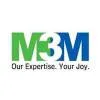With the construction sector getting increasingly professional, job interviews will have to take into account the presence of skill sets and key competency on the part of the candidate. Wits N Skills HRD Consultants offers tips to CW readers.
Accurate employee selection
decisions in the construction industry has never been more vital to organisational success. Advances in technology and changes in organisational structure and responsibilities have increased the demand for high-quality job applicants who, if hired, will grow into productive contributors to organisational success. This demand, when combined with a competitive job market and significant legal compliance requirements, means that hiring processes and decisions are increasingly complex and challenging.
A structured selection system,
when properly applied, can produce positive results in a range of areas of concern to organisations, from turnover to on-the job success and return on investment. The most important aspect of a structured selection system apart from technical tests is the interview process. Improving the interviewing process and converting it from a mere formality to a defining factor can address some common selection problems and improve the quality of selection decisions.
Objective
Conventional job interviews may focus on questions relating to an applicant's past or previous industry experience, but this is an ineffective tool for graduate level candidates who are not expected to have any former experience in the industry, they wish to work in. Questions about industry experience will not be part of a competency interview. Instead, interviewers will ask questions that require candidates to demonstrate that they have a particular skill or ´key competency´ the firm is looking for. Candidates will be asked to do this with the use of situational examples from their life experiences to illustrate their personality, skill set and individual competencies to the interviewer. Competency interviews may also feature questions that probe candidates on their knowledge of the company and industry they have applied to. These type of interview questions test candidates on their motivation and commitment to career.
Competency-based interviews must cover the following aspects:
- Focus on job-related behaviour.
- Use past behaviour to predict future behaviour.
- Assess both job fit and organisation fit motivation.
- Organise selection elements into a comprehensive system.
- Apply effective interviewing skills and techniques.
- Use data integration to make the best hiring decision.
- Make a positive impression on applicants; sell them on the job and the organisation.
Process
To implement competency-based interviewing techniques into the selection system, there needs to be a common competency framework for different levels of leadership within the organisation. This framework distinguished by levels will help the organisation and its employees to use a common language during the selection process and after selection while discussing performance and success in different roles and positions. The framework will be created with the assistance of the senior leaders of the organisation by identifying the business drivers influencing the organisation and subsequently agreeing upon a list of competencies the candidates will need to demonstrate in order to successfully accomplish the identified business drivers.
The business drivers could be as follows:
- Cultivate a customer-focused culture.
- Enhance organisational talent.
- Increase revenue production.
- Enhance product or service quality.
- Create alignment and accountability.
Types of competencies likely to be assessed are:
- Individual competencies
- Managerial competencies
- Analytical competencies
- Interpersonal competencies
- Motivational competencies
Lesson
The word competency is widely used in business and personnel psycho¡logy and refers to the behaviours necessary to achieve organisational goals. A competency is also something you can measure, every job can be described in terms of key competencies. This means that competencies can be used for all forms of assessment, including appraisals, training needs analysis and, of course, selection. While each interview may vary in terms of the questions asked or competencies reviewed, there are general themes that are usually covered. It is well worth preparing for this type of interview, for example, being familiar with some possible questions and how you will answer them.
Benefit
Implementing the competency-based interview model will help the organisation to select better. This tool will not only save time during the interview process but prove very cost-effective in the long run. With consistent and well-defined decision points, the organisation can ensure that all applicants reaching a particular stage in the system are treated the same way.
Often, interviewers end up asking similar questions at different stages, limiting the information while evaluating a candidate. Also, the interviewer´s discussions about applicant data are often haphazard or, worse, subjective. This model eliminates all this and renders a more scientific approach to interviewing. So why not start implementing the competency-based interviewing model and see the difference?




















